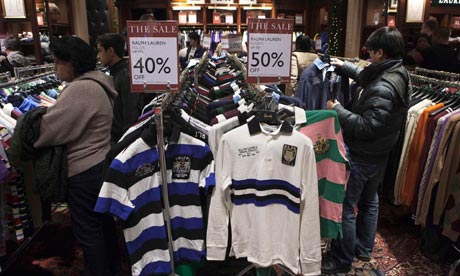Chinese shoppers influence Britain's store a lot.
Harrods, the shop in
Britain accepts China's most popular bank card and is thus actively chasing income from one of the few global economies still expanding at speed.
The taste among mainland Chinese consumers for luxury brands is nothing new. Louis Vuitton first set up shop in Beijing in 1992, and now has almost 40 outlets inside the country; within a few years Burberry will have 100.
The biggest push so far to this end has just finished, a promotional tour of Beijing and Shanghai led by the VisitBritain tourism organisation. It included representatives from London's Westfield shopping centre, the luxury goods emporium at Bicester in Oxfordshire, and even Gretna Green, which now has its own similar retail park, as well as Harrods and Selfridges.

At stake is a slice of a still relatively small but fast growing and high-spending tourism market. China accounted for just under 110,000 visits to Britain last year, a 23% annual increase. Of equal significance for retailers, the overall spend by Chinese nationals rose even faster, by 57%. The trend appears to be accelerating, with VisitBritain recording a near-doubling of the spend per Chinese tourist during 2011.
Even with annual growth still hovering near 10% China remains significantly poorer overall than the UK, with average incomes little more than a fifth of those here. However, the wealth is disproportionately based among an urban elite prone to conspicuous displays of economic status. While this group remains proportionately tiny.
China's 1.3bn population makes them sizeable in absolute terms – one report earlier this year said the country has 960,000 people worth at least £1m each. With luxury brands taxed at high rates in China, a trip abroad inevitably involves a fair degree of shopping for the country's new rich.
